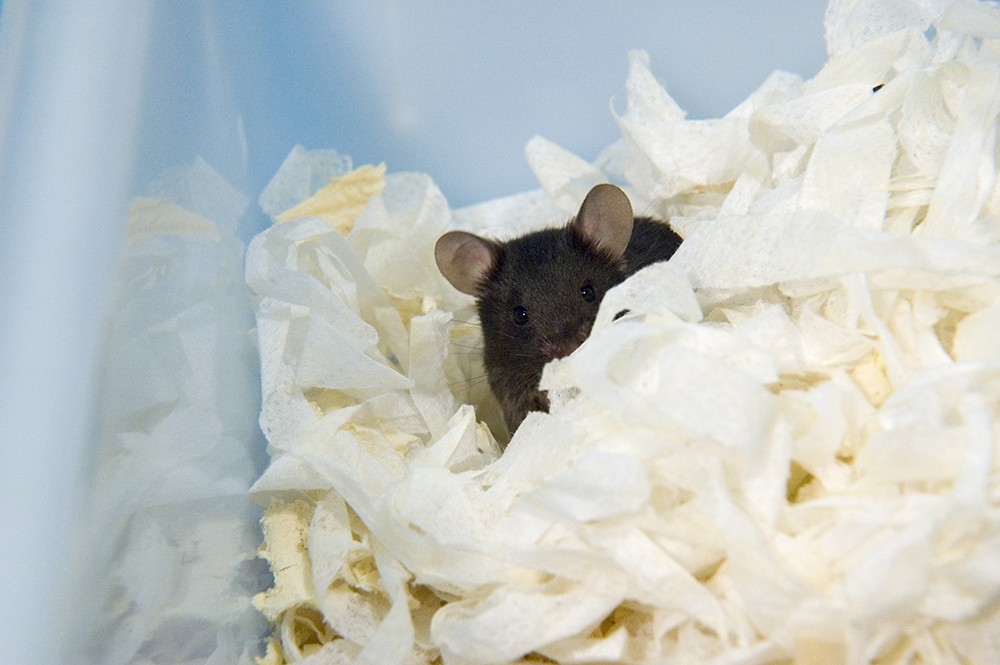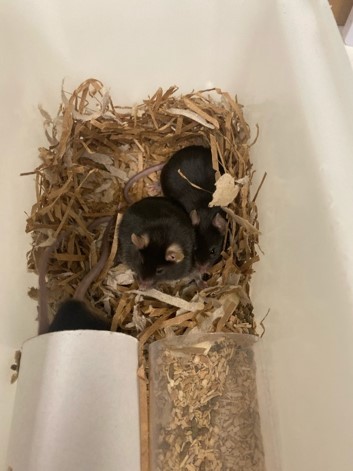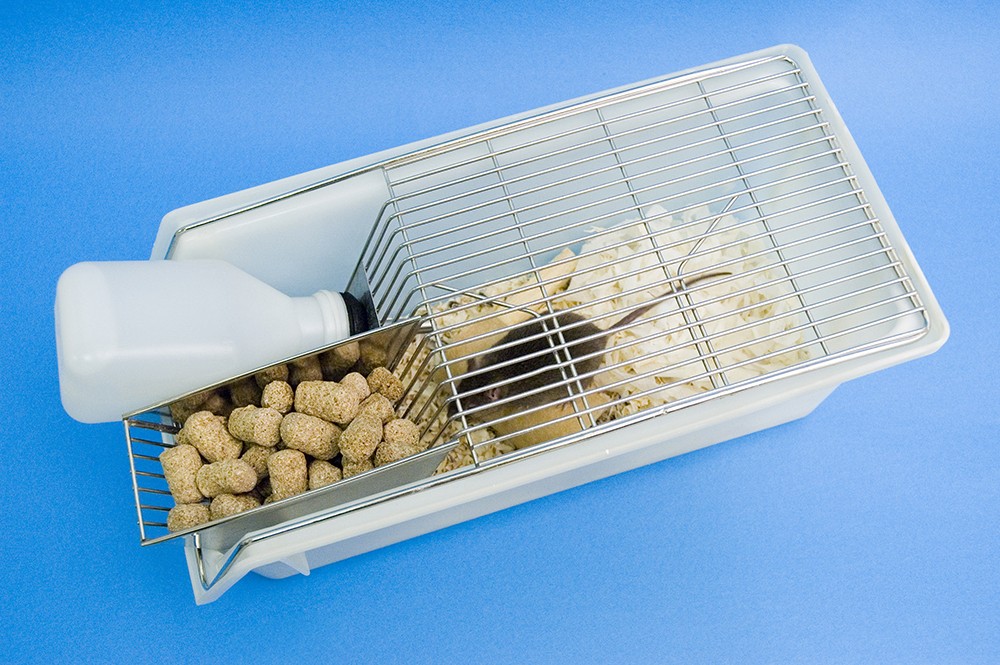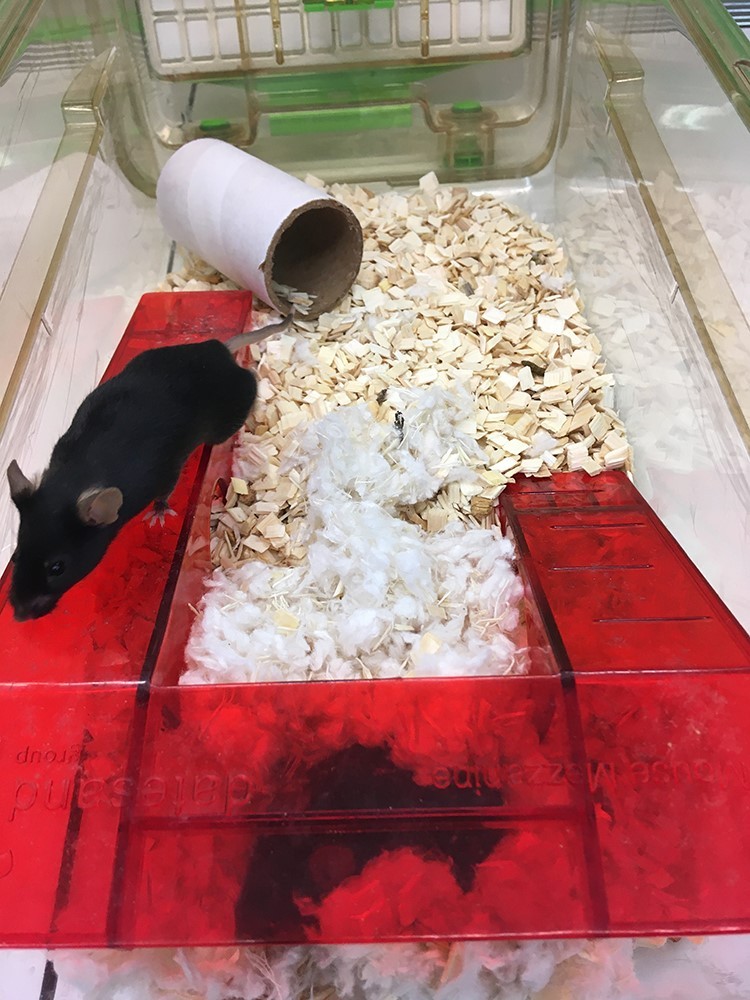Which Term Means That Ratsa and Miceas Teeth Will Continuously Grow Throughout Their Life
The laboratory mouse, derived from the wild mouse (Mus musculus), is a predominantly nocturnal, highly social animal, living in territories populated by family groups. Although partially adapted to captive life, laboratory mice show similarities to their wild cousins and will build nests, burrow, climb and forage if given the chance (Figure 1). Providing them with a living environment that allows them to perform their natural behaviours will improve their welfare.

As nocturnal animals, mice are mostly active from dawn to dusk and retreat to shelters during the daytime. During their active hours, apart from eating, which they do in short and frequent bouts, they spend their time exploring their territories, running, climbing and digging. Mice have poor eyesight; however, they have good peripheral vision which allows them to detect movement and they use their whiskers and bodies to sense their surroundings. For their daily activities, they rely heavily on their sense of smell and acute hearing. Mouse hearing extends into the ultrasonic frequencies and ranges from one kHz to about 100 kHz whereas the human hearing range is between 20 Hz and 20 kHz [1]. As prey animals, mice will generally avoid open spaces and instead prefer to move along the edge of features in their environment (thigmotaxis). Being curious by nature, they will explore their surroundings and memorize pathways and elements in their habitats, such as food sources, shelter and obstacles.
Mice emit a variety of ultrasonic vocalizations (USVs), in a wide frequency range of 20–100 Hz, which they use as communication signals in different social contexts, such as parental care, during courtship or during territorial and aggressive behaviours [2,3]. So far, and contrary to rats, USVs in mice have not been shown to correlate with negative or positive emotions; instead their main purpose seems to be the facilitation or inhibition of social interactions. However, recently there has been a lot of interest to systemically study and categorise mouse USVs [4,5] in order to investigate whether they can be used to assess welfare.
Laboratory mouse strains show considerable differences in the expression and intensity of their behaviours [6], and these differences are thought to be genetically determined and dependent on their origins. Nest building is a good example of such behavioural differences between strains, with BALB/c mice being better nest builders than other inbred strains, like C57Bl/6 and CD-1 [7,8] (Figure 2). Similarly, there are considerable differences between strains in preference for enrichment items [9,10]. Levels of aggression are also thought to vary by strain, and several investigators have reported that DBA/2 mice are more aggressive than C57BL/6 [6][11].

Housing and husbandry conditions can have a major impact on laboratory mice throughout their lives. The physical and social environment in which mice are housed has important consequences both for their welfare and the quality of research data derived from them [12,13]. Substandard housing conditions can lead to abnormal behaviours such as increased aggression, stereotypies and barbering, with some strains being more prone to developing those behaviours [14,15]. One aspect of housing that is relatively neglected, is the preference of mice to nest away from their urine and faeces. Standard laboratory housing doesn't allow the mice to spatially segregate their daily activities in this way and may therefore negatively impact their welfare [16]. Another example of an apparently inconsequential housing variable is the colour of the cage, which could influence the levels of anxiety experienced by the mice and increase their attempts to flee from their cage and their handlers. Mice tend to prefer opaque cages and seem to breed better in them [17,18], nonetheless, transparent plastic cages have become the norm in recent years. Transparent cages allow observation of the animals without the need to remove them from cage or rack, which could potentially cause stress. It is clear, therefore, that there are a number of factors that need to be considered for optimal housing and husbandry of laboratory mice.
Enclosures
Minimum enclosure sizes for mice in European research establishments are fully detailed in Table 1.1 of Annex III to Directive 2010/63/EU. The minimum permitted enclosure size for adult mice is 330 cm2, with the minimum floor area per mouse, under group housing conditions, ranging from 60 to 100 cm2 depending on body weight. The minimum permitted cage height is 12 cm. The most common types of cages are conventional open-top cages (Figure 3a) and individually ventilated cages (IVCs) (Figure 3b).

Care should be taken to arrange the living area in a way that allows mice to compartmentalise their space. For example, water and food should be provided in one end of the cage leaving the other end free to be used for urination and defecation [16]. Tubes, boxes and climbing structures can be provided in order to increase cage complexity and the available floor area and allow spatial compartmentalisation. Mice prefer solid floors with suitable bedding, such as wood shavings [19]. Use of grid or wire mesh floors requires strong scientific justification and should be avoided as this can lead to injuries. If grids or wire mesh are used, a solid or bedded area should be provided for the animals to rest on unless specific experimental conditions prevent this and are authorised by the project licence [20].
The living space of mice is three dimensional and consists of the floor area as well as the vertical space. Climbing is an important locomotor activity in mice, which can be facilitated by incorporating a grid section in the cage lid. Grid space is limited to the food hopper in IVCs; however additional climbing devices, such as mouse lofts and mezzanines (Figure 4), can be provided.

Social housing
Mice are highly social animals and in the wild they live in family groups usually consisting of a dominant male, several females with their offspring, and subordinate males [15]. As this arrangement is often not feasible in the laboratory, same sex group housing of mice can be implemented instead in order to facilitate their need for social interaction. Group-housing also promotes social exploration, and the behavioural activities of one animal—such as scent marking or digging—may also be a valuable source of novelty that elicits exploration by other group members [12] (Figure 5). More importantly, group-housed mice provide each other with social support ("social buffering") when faced with a stressful situation [21]. For example, a study by Pham and colleagues found that the social environment influences the need for pain relief during post-operative recovery, with individually-housed mice self-administering higher levels of analgesia following a surgical procedure than socially-housed mice [22].
Not all members of a group are necessarily socially compatible and group housing of incompatible mice can lead to aggression, chronic stress, injury and occasionally death. Episodes of aggression are more common in group-housed male than female mice, as male mice tend to be more territorial. A crowdsourcing study conducted by the NC3Rs, analysed data on 137,580 mice from 44 facilities and found that the mean facility-level prevalence of aggression was 15 in 1,000 mice, with some strains showing higher prevalence than others [11]. The authors give several recommendations for minimising aggression.
Where aggression does occur, this can lead to single housing and social isolation of mice. However, a number of strategies can be adopted to reduce single housing, aside from taking steps to minimise aggression [23]. The 'companion mouse' strategy is good for transgenic strains when only one mouse in a cage has the desired phenotype. As adult male mice cannot be grouped with unfamiliar males of the same strain, keeping a 'companion' littermate that doesn't carry the gene of interest can help avoid the need for single housing. An alternative solution is the post-weaning grouping strategy that consists of incorporating the single male into a cage of newly-weaned males with less than one week age difference. In general, it is advised to keep adult mice in stable groups and avoid constantly removing and introducing new individuals as this could destabilise the social hierarchy already established [11,24].
Mice heavily rely on olfactory cues in order to recognise their environment and communicate with their cage-mates [25,26]. Cage cleaning removes these scent marks [28], and can disrupt the social hierarchy and lead to increased levels of aggression [29]. Gerdinet al. (2012) showed that cage change can also lead to a significant increase in systolic arterial pressure, heart rate and locomotor activity, with these effects lasting for more than one hour [25]. These observations have led to an increasing number of husbandry recommendations that support reduced frequency of cage cleaning, spot cleaning of the dirty bedding/substrate as needed (instead of changing the whole cage), and the transfer of clean and dry nesting material during cage change in order to maintain familiar odours in the new cage [11,29,30]. Aggression-reducing scent marks, that primarily originate from saliva, plantar sweat, and urine [27], are carried in the nesting material.
The social environment is also important for pup survival and wellbeing. Reproductive asynchrony – the presence of two litters in a single cage with a large age difference between them (Figure 6) – has been identified as a key factor for high pup mortality [31]. Therefore, care should be taken to avoid housing two or more litters of different ages together, potentially by removing and temporarily single housing the pregnant females prior to parturition or opting to set up breeding pairs instead of breeding trios.
Lights and sounds
Mouse rooms typically have a 12-hour light-dark cycle. It is recommended that light levels within the enclosure are low, particularly for albino animals as they are more susceptible to light-induced retinal damage [32]. Racks should ideally have shaded tops in order to keep light intensity to a minimum and reduce the risk of retinal degeneration [20].
Mice are very sensitive to ultrasound, which they use for communication. Sources of ultrasound in laboratories include dripping taps, trolley wheels and computer monitors, which may affect mouse behaviour and breeding cycles [21,33]. As some sources of ultrasound cannot be eliminated (e.g. laboratory equipment), playing background music may help mask stressful sounds [15]. It is advisable to minimise sudden irregular noises as they create more disturbance in breeding rodents than continuous or predictable sounds and can increase the risk of mis-mothering or cannibalism [20].
Temperature
According to UK Home Office guidelines, the room temperature for mice should be 20–24°C (68–75°F) and kept as stable as possible [20]. However, the thermoneutral zone of mice is between 26°C and 34°C (79–93°F) and therefore they may experience cold stress in the laboratory unless nesting material is provided for them to regulate their body temperature and the microclimate within the cage. Sufficient nesting material should be provided that enables them to create good nests, which can reach temperatures of 30–32°C (86–90°F) [34,35]. This is particularly crucial for newborn pups which lack the ability to thermoregulate and therefore their survival depends on the warmth of their mother and siblings, which is retained by the nesting material [36] (Figure 7).
Ventilation and humidity
The air in the mouse room should be renewed at frequent intervals. Typically, a ventilation rate of five to 20 air changes per hour is adequate for a fully stocked room of mice. The relative humidity should be kept at 45 to 65% [20].
For IVCs (Figure 8), the number of air changes per hour typically ranges between 25 and 120. As air is blown into the cage at relatively high speed, the intra-cage ventilation rate could lead to chronic stress as well as heat loss due to the draught [37]. Therefore, mice in IVCs should be monitored for any signs of anxiety or discomfort, and the air change rate should be adjusted accordingly. Signs that the mice are reacting to the high air flow include change of location of the nest or building protective barriers against the draught using bedding material [16]. If such changes in behaviour are detected care should be taken to decrease the intra-cage draughts and provide mice a comfortable environment to live in.
Environmental enrichment (Figure 9) provides sensory and motor stimulation for captive animals and allows them a greater choice of activity and some control over their environment [13,38]. Bedding and nesting material, refuges, and gnawing sticks are the most commonly used enrichment resources for mice and should normally be provided in every mouse cage unless there is sound scientific justification not to. Giving mice the opportunity to perform species-typical behaviours, such as nest building or foraging, can significantly improve their lives in the laboratory. Gnawing is also an important behaviour for mouse welfare; as their teeth grow continually through their lives, an inability to gnaw can lead to malocclusion (overgrowth of incisors) and consequently malnourishment. Barren enclosures are associated with signs of impaired welfare, such as anxiety and abnormal repetitive behaviour [13]. During breeding, lack of enrichment has been shown to result in higher pup mortality, reduced pup weight, and delayed development [36].
Mice prefer nesting material over every other form of enrichment [39], including prefabricated refuges, manipulanda and social contact [9]. Nest building is well preserved from wild‐type progenitor mice and is undertaken equally by female and male mice. Assessing the quality of the nest is a great cage-side tool to identify health and well-being issues (such as thermal stress, aggressiveness, sickness, and pain) and nest scoring protocols are available in the literature [40,42,43,44]. Even mice at the preclinical stage of a disease (i.e. not yet showing any clear clinical symptoms) may fail to build adequate nests, if they manage to build a nest at all [40,43].
Common nesting materials for laboratory mice include facial tissue, shredded paper strips, compressed cotton squares (nestlets), wood wool, and wood shavings [45,46]. Mice seem to prefer paper-derived materials (e.g. shredded paper) over wood-derived materials (e.g. cotton squares), however, preference for a particular nesting material might depend on the structure rather than the nature (paper or wood) which determines how easily they can manipulated to create a nest [47]. Providing appropriate nesting material can allow even "nest-building challenged" strains (e.g. C3H mice) to build nests comparable to stains with strong building skills (e.g. BALB/c) [48]. Additionally, care should be taken when choosing nesting material for some groups of mice, such as breeding mice or post-surgery mice, as some types of nesting material might have a negative effect on animal welfare [46]. For example, pups and adult mice could get entangled and injured in cotton wool [49,50], and mice with head implants risk getting tangled while trying to build a nest using facial tissue [51] (Figure 10).
Mice also show preferences for different bedding materials, shelters and gnawing resources, which can be sex or strain specific [20,52,53,54]. Therefore, provision of environmental enrichment shouldn't be a random process whereby different objects are included in a mouse cage based merely upon their availability; instead care should be taken to assess the true beneficial effect on the animals' overall well-being [15,55].
alexanderrismustriog.blogspot.com
Source: https://www.nc3rs.org.uk/3rs-resources/housing-and-husbandry-mouse
0 Response to "Which Term Means That Ratsa and Miceas Teeth Will Continuously Grow Throughout Their Life"
Post a Comment